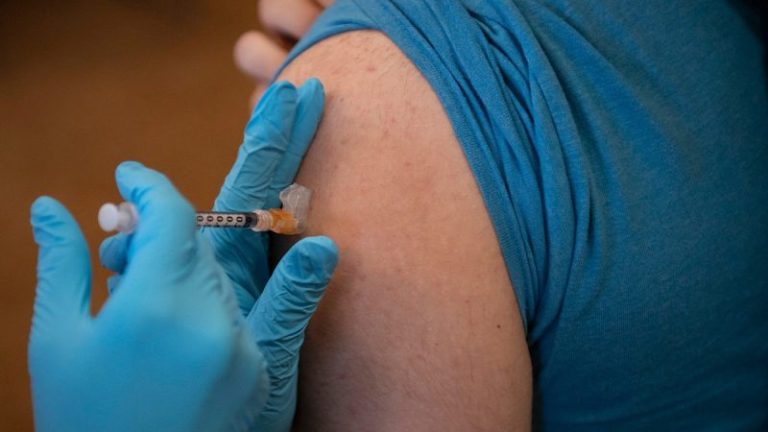Anticipation is building in the oil market as the OPEC+ meeting approaches, with a production decision expected over the weekend.
The eight cartel members who previously implemented voluntary production cuts are now contemplating a substantial rollback of these cuts in July.
The eight members of the Organization of Petroleum Exporting Countries and allies, including kingpin Saudi Arabia and Russia, had previously agreed to increase oil production by over 400,000 barrels daily in May and June.
“Markets are currently influenced by headlines, but they are truly awaiting a clear signal from the fundamentals,” Mukesh Sahdev, global head of commodities market, oil at Ryatad Energy, said in an email.
“Even when factoring in potential downside risks, the numbers we’re seeing suggest there’s space for additional OPEC+ output in July,” he added.
This is further noted in the Brent futures curve, which remains in backwardation through October 2025.
Strength in prices
Oil prices have firmed over the last few sessions, albeit thinner trading earlier this week due to public holidays in the US and UK.
“The strength is likely due to relief that the threat of new US tariffs against the EU has been postponed for the time being,” Barbara Lambrecht, commodity analyst at Commerzbank AG, said.
However, many uncertainties remain, especially with regard to (US) sanctions policy.
On the one hand, there are the nuclear negotiations between the US and Iran.
Although these were so far inconclusive, both sides remained optimistic after the fifth round of talks and want to meet again in the near future.
A possible easing of sanctions against Iran therefore remains on the table.
On the other hand, despite a downturn in relations between Russian President Putin and US President Donald Trump, triggered by Moscow’s extensive attacks on Ukraine, Trump has stated he will “absolutely consider” implementing new sanctions against Russia.
Conversely, Russia appears intent on minimising the significance of Trump’s response.
“Chart-wise, crude oil has been in a downtrend ever since prices peaked in March 2022, soon after Russia invaded Ukraine,” said David Morrison, senior market analyst at Trade Nation.
But that doesn’t mean that prices can’t spike sharply in either direction.
Summer demand supports OPEC output increases
According to analysts and experts, oil demand rises sharply during the summer months from May to August.
This presents a suitable opportunity for OPEC+ to increase oil production without flooding the market.
Liquids demand growth this summer is being driven by Europe and the Middle East, rather than Asia or North America.
Supply-side growth is primarily driven by Saudi Arabia, the US, Canada, and Brazil. However, Canada’s output faces wildfire risks, and Brazil’s may see softer demand due to alternative supplies.
Global liquids demand is projected to grow by only 700,000 barrels per day in 2025, according to Rystad Energy’s calculations.
However, fundamentals from May to August are supportive, with demand growth outpacing supply growth by 600,000-700,000 barrels per day, the Norway-based energy intelligence company said.
Additionally, crude and condensate demand is projected to exceed supply by over 1 million barrels daily for the indicated timeframe, Rystad noted. This assessment precedes the upcoming OPEC+ meeting this Saturday.
Refinery demand growth and supply
Globally, increased crude demand for refineries is anticipated from Asia, North America, Europe, and Russia.
Russian refinery operations may become especially important as tightening sanctions on its crude exports could lead to an increase in domestic refining.
“Overall, oil market uncertainty is likely to prompt many countries to maximize refinery runs and build product inventories, especially as stock levels remain low across regions,” Sahdev said.
Challenges already plague US crude oil production, and the earlier narrative of a significant increase in drilling activity has faded.
With the West Texas Intermediate crude oil, the benchmark price for US oil, hovering around $60 per barrel, producers are unlikely to expand drilling activities, experts said.
Output declines elsewhere
From May to August, output reductions are anticipated for Kazakhstan and other OPEC+ participants. This situation will allow the eight OPEC+ nations to reactivate some of their previously offline supply.
To bolster refinery margins, Saudi Arabia might provide crude oil at reduced prices for July.
Strong product margins continue to support high levels of refinery operation.
Furthermore, the recovery of high sulfur fuel oil margins into profitable territory provides an incentive for less complex refineries to also increase their processing rates.
“In this environment, driven by public narratives and differing opinions, OPEC+ has an opportunity to increase supply modestly in July,” Sahdev said.
However, beyond August into September, this window could close, and any further increase would likely depend on supply disruptions elsewhere in the market.
The post Summer demand could support OPEC+ output increases, say analysts appeared first on Invezz




